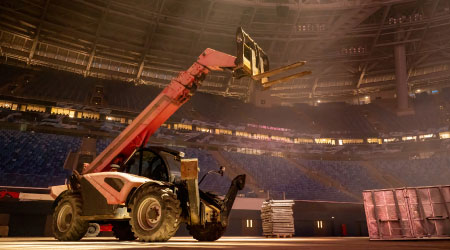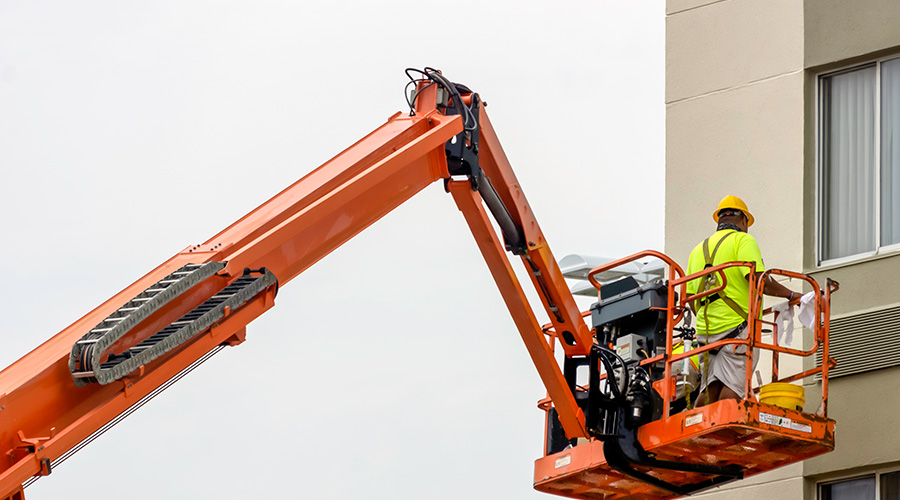Embracing MEWP Safety, Fatalities Decrease
MEWPs must always be in peak condition and must never be a safety threat to the operators or people around the machine.
In its 2023 Global Safety Report, IPAF reported that number of fatalities resulting from MEWP mechanical and technical failures in 2022 were down more than 75 percent from the previous year — a sign that managers are embracing the idea of regular and more common inspections, which come in many forms.
“The setting up of a regular inspection and maintenance schedule and following the manufacturer’s instructions on service and maintenance throughout the lifetime of the machine is critical,” according to the report. “Manufacturers specify the service and maintenance intervals and what items need to be checked, measured or replaced.”
Groat defines these critical routine maintenance and inspection processes that managers should consider as part of their plan:
- scheduled maintenance based on workplace environment and use frequency
- pre-delivery inspections
- annual inspections
- compliance with safety-related bulletins
- daily pre-start and post-operation inspections
- as defined by the manufacturer.
“Operators should always carry out pre-use checks, both visual and functional, before each work shift,” according to the report. “If planned maintenance is not carried out, it could lead to breakdowns and undue component wear.”
Groat says managers need to make checklists of the steps in each inspection.
“It’s as defined by the manufacturer and the standards, so if you’re doing a frequent inspection, which is typically something that you would do every three months as opposed to an annual inspection, you say, ‘Here’s a list of things that the standard says is a minimum.’
“It includes emergency operating speeds, proper operation, limits of motion, ground control functions and all cable mechanisms. Ensure that all guards are in place, in working order, the list goes on and on. One thing I always say with most things on the list, 'Where is my checklist?’
“All of these different inspections have a specific checklist that you go over. A lot of them are common in each one of those inspections, but you get to a point where you have frequent inspections versus an annual inspection, the annual inspection will get more detailed.”
Other signs managers need to watch for during the inspection and maintenance processes include out-of-date inspections, items identified during pre-use inspections and damage due to misuse or accidents.
“The need of ‘immediate’ is typically a sign that required maintenance and inspections were not followed,” Groat says.
Using telematics
History repeats itself, according to the familiar saying. When a maintenance team possesses a fleet of MEWPs, managers typically develop a good feel about the kinds of duties they perform, and over time a pattern of use develops. From this information, managers can plan maintenance scheduling on machines. Through the emergence of telematics, machines are helping make planning maintenance easier. Telematic technology enables MEWPs to collect and transmit data on their use and maintenance and service needs.
“History does repeat itself, and the data can be used to forecast normal maintenance requirements and preventive measures,” Groat says. “The increased use of telematics can increase awareness of specific machine anomalies before critical failures occur.”
By measuring the way a machine performs and is being used, managers and manufacturers can base future decisions on the data those machines reveal.
“There’s an awful lot of information out there, and sometimes you can get drowned with information,” Groat says. “Telematics are a great tool. The manufacturers are integrating them more and more to help machines be more predictive. They give you the ability to go out and identify issues — if a machine has low-oil pressure or what’s going on with a machine — more than a checklist would. The machine is telling you what it is doing all the time.”
Mechanics can feel pressure to get a MEWP back up and operating again, which can lead them to shortcuts in both repairs and regular inspections. But no matter the situation, managers need to emphasize to technicians that MEWPs must always be in peak condition and must never be a safety threat to the operators or people around the machine.
"Too often, we rush to get the work done, to get the equipment back into service, and we take shortcuts, and that’s a disaster waiting to happen,” Groat says. “That’s putting a Band-Aid on something that you know needs a full operation. It’s not well-advised.
“There are ways to doing things, like not having an inexperienced mechanic work without the review of a senior person in assistance making sure they do the work properly before someone starts actually operating the equipment.”
Dave Lubach is the executive editor for the facilities market. He has more than eight years of experience covering facilities maintenance and management.
Related Topics:













